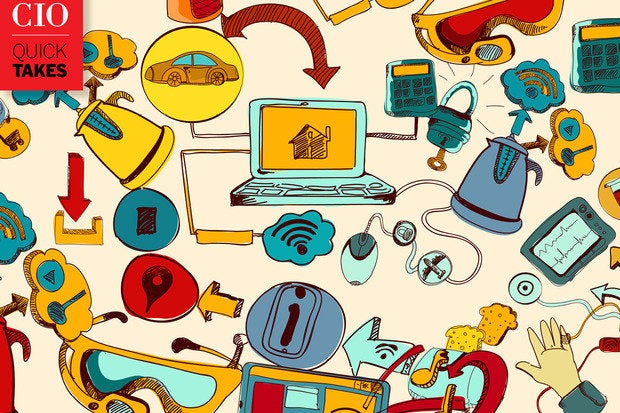
When you hear the phrase Internet of Things (IoT), you are probably excited, confused, concerned or tired of hearing the buzzphrase — or maybe all of those things plus a few more. After all, the reality of digital devices acting on their own to capture, transmit and, in some cases, act on data affects everything from home appliances to telehealth is attention-getting.
Just how many “things” are are talking about? Gartner estimates that by 2020, the IoT will consist of 25 billion devices. Those devices, according to Cisco, will dominate the Internet by 2018. Yep, dominate – meaning machines will communicate over the Internet more than we (i.e. humans) do. So if there’s a little fear, uncertainty and doubt mixed in among the excitement, it’s only natural.
gautam royGautam Roy, vice president of IT, Waste Management: ‘In the always-on world, the right data at the right time can help businesses to operate effectively and communicate with their customers to provide personalized solutions.’
And it’s not just consumer applications driving the technology. While consumer technology will account for the greatest number of connected things, according to Gartner, enterprises will drive the revenue. The research firm predicts that in 2020 the top industries will be utilities, manufacturing and government. The automotive sector is showing the greatest growth currently, Gartner says.
Ken PiddingtonKen Piddington, CIO and Executive Advisor, MRE Consulting: ‘I believe that the biggest opportunities lie in the ability to collect, process and respond to data streams in real-time. ‘
To gain a little context on the IoT and business, we reached out to three IT executives, with the help of our friends at the CIO Executive Council, for a little perspective. As you’ll note, there is a common theme among the responses.
When you think about the IoT, what do you see as the biggest opportunities and the biggest areas of concern?
Gautam Roy, vice president of IT, Waste Management
As the physical and digital worlds integrate more closely, the IoT will enhance and evolve our ability to manage and process information. The IoT has the potential to transform industries and the way we live and work by turning data into collaborative experience.
sam chesterfieldSam Chesterman, Worldwide CIO at IPG Mediabrands: ‘The obvious concern here is security. The last thing we want is for a hacker to be able to take control of these things.’
In the always-on world, the right data at the right time can help businesses to operate effectively and communicate with their customers to provide personalized solutions and optimize supply chain cost. It could help government tackle socioeconomic issues through a better understanding of data.
Issues are plenty: Security, privacy, integration complexity, governance, standards and policies.
Ken Piddington, CIO and Executive Advisor, MRE Consulting
The IoT or better-stated, the Internet of Everything is creating unprecedented opportunities for organizations to achieve great value from a growing network of connected devices. I believe that the biggest opportunities lie in the ability to collect, process and respond to data streams in real-time. For example, the value proposition for supply chain optimization is tremendous.
The biggest challenge is security. With the number of network devices increasing so does the number of attack vectors. A proper balance between security and use must be found for the IoT to deliver all the value envisioned for it.
Sam Chesterman, Worldwide CIO at IPG Mediabrands
The IoT is about to blow up in a major way. We’re only a few years from unlocking our doors, opening our garage doors, dimming our lights and controlling our home entertainment and climate systems via smart devices. Some of us, myself included, have already taken the plunge. I use the Nest thermostat to control climate, the Harmony Ultimate Home to control all of my TV and entertainment devices, and Wink for all zigby and z-wave bulbs in my house.
It’s such a convenience to be able to turn down the volume of my daughters programs downstairs with my smartphone when I’m tired of hearing Spongebob blaring throughout the house. Not too mention turning on the AC or heat and setting the perfect temperature without having to physically visit the thermostat.
The obvious concern here is security. The last thing we want is for a hacker to be able to take control of these things. A secondary concern is the sheer number of players and protocols at play. Not everything that works with Z-Wave works with Zigby, etc.
[“source-cio.com”]







